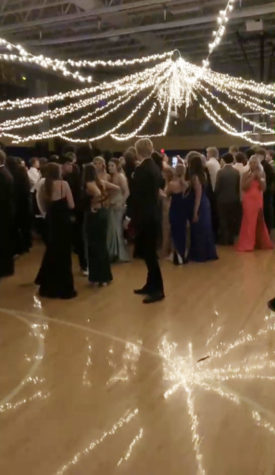School resource officer questions the safety of monthly fire drills
Fire regulation and safety code have, for years, required schools to practice fire drills once a month based on a nine-month school year. Though keeping students aware and up to date on how to safely exit a school in the event of a fire, recent shootings have raised concern on if fire drills are still a safe practice in schools.
Fires in schools have become increasingly rare, with an estimate of 5,100 structure fires between 2009 and 2013. “I don’t know when the last time a school fire was,” said School resource officer Randel Pitchford, “but the last time a student was killed in a school fire was in 1958, and that was an old Catholic school in Chicago where the code was probably not up to date.”
Each of the 50 states have adopted the Universal Fire Code, “This is what dictates how many people can be in a building, how many escape routes can be in a building, and when you build a building you have to get it approved by the county,” said Pitchford. This code also states how many drills must be performed each month and states that a certain amount must be evacuation drills for the students. However, fire drills have recently begun to put students at risk with the evacuation of schools.
“Back in the day, we never had an active shooter drill,” Said Pitchford. “I think that our response to fire alarms and any evacuation puts our kids in grave danger.” The newly implemented ALICE training has begun to teach Sheridan High School how to assess the situation and think before doing, which is something that Pitchford believes should be the case with fire drills. “I hate fire drills, and if I had my way I would eliminate the alarm all together, and train our people to assess the situation prior to evacuating the school,” said Pitchford. In the new year, there has already been school shootings where the fire alarm has been utilized to lure students out of classrooms.
“All of us can be safe by just being aware of our surroundings,” said Pitchford. “If the alarm goes off and it wasn’t planned, that’s when you need to be extra diligent.” Each of the school fire alarms are planned, and Pitchford pushes that staying in the room to assess the situation before a class evacuates is never wrong. “The fire department contacts the school and works out a date and time that works for a fire drill,” said Pitchford.
The staff usually knows when a fire alarm is planned; however, the near future for fire drills looks to be taking a turn. “We will probably start doing fewer fire drills and more active shooter drills,” said Pitchford. ALICE drills qualify as required drills in the Universal Fire Code, so cutting back on evacuations should be something to expect. Pitchford expresses worry for even a small high school like Sheridan’s: “Slow down and look before you go. Listen and just be aware of what’s going on. Unplanned alarms are when students need to be extra diligent.” The school may not have monthly fire drills due to safety concern; however, students should be prepared to see more ALICE training and be prepared to analyze their situation in a society where shooters are a bigger worry then school fires. “I have contacted our elected officials to get the ball rolling and try at least to revisit our Universal Fire Code,” said Pitchford. “It hasn’t been updated in over 50 years, and we need to make it safer for our students.”














